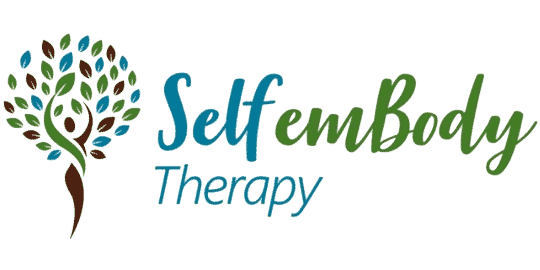EMDR Therapy San Diego
Are you consumed by thoughts of painful old memories and past trauma?
Home » EMDR Therapy San Diego
EMDR therapy can help you finally feel free from these negative feelings related to past trauma...
Many people experience trauma at some point in their lives.

Who Is EMDR For?
Eye Movement Desensitization and Reprocessing (EMDR) is an evidence-based therapy that helps people heal from trauma and distressing life experiences. This type of therapy uses bilateral stimulation (such as guided eye movements or tapping) to help the brain process and integrate painful memories. Unlike traditional talk therapy, it focuses on resolving the emotional impact of trauma without requiring clients to go into excessive detail about the event. Research has shown that this can be highly effective for treating trauma: a study by the Department of Veterans Affairs found that 77% of combat veterans no longer met the criteria for PTSD after 12 sessions of EMDR.[2] Additionally, the World Health Organization (2013) recognizes it as a first-choice for PTSD treatment.
Major health organizations—including the American Psychiatric Association, the American Psychological Association, the Department of Defense, the Department of Veterans Affairs, and the World Health Organization—recognize it as an effective, evidence-based treatment for trauma and PTSD, highlighting its widespread acceptance in the mental health field.
It can also be extremely helpful for mental health conditions other than PTSD and trauma. For example, a 2021 systematic review covering 14 different conditions (including anxiety, depression, and stress-related issues) found that EMDR therapy produced positive outcomes in approximately 58% of studies
How Does EMDR Work

Even if you have experienced trauma, the good news is that EMDR counseling can help. It can help you in a way that traditional talk therapy cannot by accessing the brain on more of an unconscious level. For some individuals that have experienced trauma, talking about the past traumatic event can be very difficult and triggering — possibly even re-traumatizing. One of the best parts is that you, as the client, do not even need to tell me all of the specific details of your past trauma (unless of course you want to). In a session, I can still help you target and address the past traumatic events without having to discuss details that may make you feel even worse in that moment. Though I believe that discussing trauma in-depth can also be incredibly therapeutic and healing, every client is different and those that have a diagnosis of PTSD may do even better to start with treatment before diving into specific details. I have utilized EMDR treatment to successfully help trauma survivors heal from a variety of trauma, anxiety disorders, eating disorders, and more in multiple treatment settings.
What are the benefits of EMDR:
- Recovering from past trauma and no longer allowing the trauma to control your present life
- Fast track to results - many clients begin to feel relief after just a few sessions
- Let go of negative limiting beliefs, thus transforming the way that you view yourself and the world
- Overall increased self-esteem
What To Expect in an EMDR Session
EMDR is an integrative therapy technique called bilateral stimulation to activate opposite sides of the brain. During sessions therapists activate the bilateral stimulation through various techniques such as eye movements, tapping, or lights. There is a systemic way to do it correctly, so you want to be sure that you find a therapist that has completed EMDR training and can lead the technique properly. I will provide you with the necessary tools to prepare for the session, guide you through the session, and also show you ways to continue to practice coping skills and self-care between therapy sessions.
How do I prepare for an EMDR session?

I work closely with all of my clients to help them feel prepared before beginning any EMDR sessions. The first couple of sessions will consist of you telling me more about your presenting issues and what you would like to resolve through EMDR therapy. We review the process together and I answer any questions you may have. Then, I teach you grounding skills that we practice in session and that you can also use in between sessions to aid in relaxation and emotional regulation. I will guide you through the entire session; you can just sit back and follow my lead.
The Eight Phases of EMDR
- History Taking: The therapist gathers a comprehensive clinical history, identifies potential target memories for processing, and develops a treatment plan. This includes assessing the client’s readiness for treatment, and establishing safety and therapeutic rapport.
- Preparation: The therapist explains the process and teaches the client self-regulation techniques (like grounding or visualization techniques) to manage emotional distress during and between sessions.
- Assessment: The therapist helps the client identify the target memory chosen to process, the negative belief tied to it, and a preferred positive belief. Emotional intensity and body sensations are also assessed using rating scales (SUDS for distress and VOC for the positive belief – all of this will get explained thoroughly during session!).
- Desensitization: Bilateral stimulation (such as eye movements, tapping, light bar, or audio tones) is used while the client focuses on the memory. This helps the brain reprocess the experience and gradually reduce the emotional intensity around it. The therapist guides and supports the client throughout this entire process.
- Body Scan: The client mentally scans their body to check for any lingering physical tension or discomfort. If distress is found, the therapist and client continue with bilateral stimulation while focusing on that tension until the body feels calm and relaxed.
- Closure: Each session ends by returning the client to a sense of stability, even if the target memory wasn’t fully processed. The therapist may use relaxation exercises, debrief with the client, or reinforce coping skills.
- Reevaluation: At the start of the next session, the therapist reviews previously processed memories to ensure the emotional resolution has held and identifies new targets for future EMDR processing sessions.
Sarah Lawley Chernick, LMFT
Certified EMDR Therapist
My name is Sarah Lawley Chernick and I am a licensed Marriage and Family Therapist in California and I am an EMDRIA Certified Therapist™. I am also trained in Trauma-Focused Cognitive Behavioral Therapy. I have 10 years of experience working in the mental health field and have used EMDR with many clients in various treatment settings and for many of the conditions listed above. Clients have stated that they felt better after even one session, and significantly better after a few in a row! I have also had clients tell me that it allowed them to finally let go of negative limiting beliefs that had been holding them back in their lives, thus increasing their overall self-esteem.
Not only have I utilized it with many different clients, but I have used it in various treating settings including residential treatment centers, psychiatric hospitals, school settings, outpatient clinics, and private practice. In addition to these various treatment experiences, I also utilize mindfulness and breathing techniques that I have learned through my training as a Registered Yoga Teacher. This provides a unique blend of standardized EMDR treatment intertwined with relaxing strategies to help clients feel comfortable during and after the session.
Credentials & Certifications:
- Licensed Marriage and Family Therapist in California (License # 115162)
- EMDR Certification with EMDRIA
- Trauma-Focused Cognitive Behavioral Therapy
- 200 HR Certified Yoga Teacher - Trained in various mindfulness and meditation techniques
- Have worked in many diverse treatment settings (community-based mental health, crisis, residential treatment centers, psychiatric hospitals, intensive outpatient, and private practice) helping clients to overcome trauma
Why Book an EMDR Session with Me?

Not only have I utilized EMDR with many different clients, but I have used it in various treating settings including residential treatment centers, psychiatric hospitals, school settings, outpatient clinics, and private practice. In addition to these various treatment experiences, I also utilize mindfulness and breathing techniques that I have learned through my training as a Registered Yoga Teacher. This provides a unique blend of standardized EMDR treatment intertwined with relaxing strategies to help clients feel comfortable during and after session.
Are you ready to say goodbye to your distressing trauma?
Contact me to schedule a 15 minute phone consultation and see if EMDR therapy in San Diego is right for you!
My Standard Rate is $200 Per Session (50 Minutes)
As an out-of-network provider, I have partnered with Mentaya to help my clients save money on therapy. Use the out of network benefits calculator to see if you qualify for reimbursement for my services. Learn more about my rates and insurance.
You may have some questions about seeing an EMDR therapist...
Who should not do EMDR therapy?
EMDR may not be appropriate for everyone. Individuals who are actively suicidal, in the midst of a crisis, have untreated dissociative disorders, or lack sufficient coping skills may need to stabilize before beginning sessions. Additionally, individuals with certain medical conditions (like seizure disorders or severe cardiac issues) should consult with their healthcare provider and get clearance before starting. A trained EMDR therapist will assess whether it’s the right fit and may recommend other treatments first if determined.
How quickly does EMDR work?
The speed of progress varies depending on the person. Some individuals experience significant relief after just a few sessions, especially when working with a single, less complex trauma. Others with a history of chronic trauma or multiple distressing events may need more time to build safety and process memories through treatment. Research has shown that EMDR trauma therapy can lead to meaningful results in fewer sessions than traditional talk therapy, with some studies reporting improvements in PTSD symptoms after 6–12 sessions[1].
American Psychological Association
Will I cry during EMDR?
It’s very common to feel strong emotions during sessions, and crying is a normal part of the healing process for many people, but not always. Since EMDR involves recalling distressing memories, emotions like sadness, fear, or anger may surface; but this is a sign that your brain is processing and releasing what it’s been holding onto in relation to this memory. Your EMDR counselor will support you throughout the process and ensure you have tools to stay grounded and feel safe, even if strong emotions arise.
Is EMDR covered by insurance?
EMDR is typically covered by insurance—often fully in-network and partially out-of-network. Coverage depends on session length, session limits, and the individual plan. I am an out-of-network provider in CA and FL, and I accept select insurance plans in UT. It is best to contact your insurance company directly to ask if you have out-of-network or in-network benefits that would cover it.
How much does EMDR usually Cost?
My standard rate is $200 per 50-minute EMDR session for out-of-network clients that live in CA and FL. Longer sessions are available at request. If you live in UT and are using insurance, you may only need to pay a co-pay (please check with your insurance company first).
Are there any dangers of EMDR therapy?
EMDR is generally considered to be safe, and not harmful or dangerous. If you experience any side effects at all, they may include light-headedness or heightened emotions/physical sensations after the session. If you experience this, it should subside over time as the memories become less intense. It may be contraindicated in those with certain health conditions, and this is something I discuss with clients to ensure that it is a good fit before we begin.
Will EMDR treatment work for me?
Though you will never truly know if treatment will work for you without trying it, research has shown it to be highly effective. Especially if you have tried traditional talk therapy and you feel that you are not seeing the results you would like, this treatment could be a great alternative and/or adjunct to talk therapy. I refer to it as a great option for those that are feeling “stuck” in their daily lives and are looking to keep moving forward, but having difficulty doing so.
What is EMDR Used to Treat
- Post Traumatic Stress Disorder (PTSD) - A condition in which a person has difficulty recovering after experiencing or witnessing a traumatic event. Some symptoms may include feelings of distress, physical reminders of trauma (nausea, sweating, pounding heart), intrusive thoughts and memories, flashbacks, nightmares, feeling emotionally detached, loss of interest in life and daily activities, and avoidance of specific events/feelings that serve as a reminder of the traumatic event.
- Trauma - Even if you do not meet the full criteria for PTSD (above), EMDR can also be incredibly helpful for individuals that have experienced any type of trauma throughout their lives.
- Childhood Trauma - EMDR can also be very helpful for individuals that may have experienced trauma during their childhood. EMDR Therapy has the ability to help you process difficult past events, no matter how long ago they occurred. Processing traumatic events from your childhood can be incredibly helpful, as they may be having a negative impact on your current life and worldview without you even consciously realizing it!
- Generalized Anxiety Disorder (GAD) - A condition in which an individual experiences excessive worry about a number of different things (personal health, work, relationships, finances, etc) most days, for at least 6 months. The fear and anxiety can cause significant problems in areas of their life including work, social relationships, and more.
- Other Specified Anxiety Disorder - Symptoms of an anxiety disorder cause significant distress or impairment in social, occupational, or other important areas of functioning but do not meet the full criteria for another anxiety disorder diagnosis.
- Panic Attack - Heart palpitations, sweating, trembling or shaking, shortness of breath, feelings of impending doom.
- Specific Phobia - Marked fear or anxiety about a specific object or situation (i.e. flying, heights, spiders, receiving an injection).
- Eating Disorders - Eating disorders are characterized by a persistent disturbance of eating-related behaviors that results in the altered consumption or absorption of food and that significantly impairs physical health or psychosocial functioning. Eating disorders can negatively impact an individual’s physical health, relationships, work/school functioning, and overall self-esteem.
Areas I Specialize In
EMDR Therapy for PTSD / Trauma
EMDR for PTSD / Trauma helps the brain reprocess painful experiences so they no longer feel overwhelming or stuck in the present. It’s a powerful tool for healing both single-incident traumatic situations as well as complex trauma.
EMDR Therapy for Anxiety
EMDR for anxiety targets the root memories and beliefs fueling anxious thoughts and physical symptoms. This can help clients feel calmer, safer, and more in control.
EMDR Therapy for Eating Disorders
EMDR for eating disorders addresses the underlying emotional and relational wounds that contribute to disordered eating, body image issues, and food-related anxiety. Processing through these allows you to develop a healthier and more peaceful relationship with food and your body.
EMDR Therapy for Depression
EMDR for depression works to shift negative self-beliefs and unresolved life experiences that contribute to hopelessness and low mood. It can help individuals to feel more empowered and connected to a sense of meaning and resilience.
EMDR Therapy in San Diego
If you’re ready to overcome your trauma and learn more about EMDR treatment, please use the button above or call (619) 800-5393 for a free 15 minute phone consultation.
EMDR, Eating Disorders, Anxiety
5330 Carroll Canyon Rd Suite 120,
San Diego, CA 92121
(619) 800-5393
